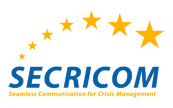Researchers from the SECAN-Lab group headed by Prof. Dr. Thomas Engel continue their efforts to make industry control systems more secure and resilient against wide range of networks attacks. Together with the Luxembourg utility company Creos, they search for weaknesses within contemporary SCADA deployments using emulation - a method to analyze real-world systems with a high level of details. To this end, the SCADA team researches methods to stay safe and robust in the presence of network attacks.
Read more ...
Internet Technology invades almost all spheres of our everyday life. Due to emerging use cases such as online social networks, banking, buildings automation, smart metering, eHealth, and eGovernment, networks are increasingly used to transmit privacy-sensitive data. The volumes of transferred, processed, and stored data are continuously expanding. There is an ever-growing temptation to collect the information once revealed: storage becomes steadily cheaper, data mining increasingly better. As a consequence, privacy on the Internet is attracting more and more attention and has become a serious concern.
Read more ...

The world is urbanizing rapidly. As a consequence, traffic congestion in metropolitan areas has significantly increased over the last two decades. Although there has been significant innovation in cars’ safety systems and fuel efficiency, traffic congestion remains one of the modern ills of our society. In most cases, existing road infrastructure cannot easily be extended to meet increasing traffic demand.
Read more ...










